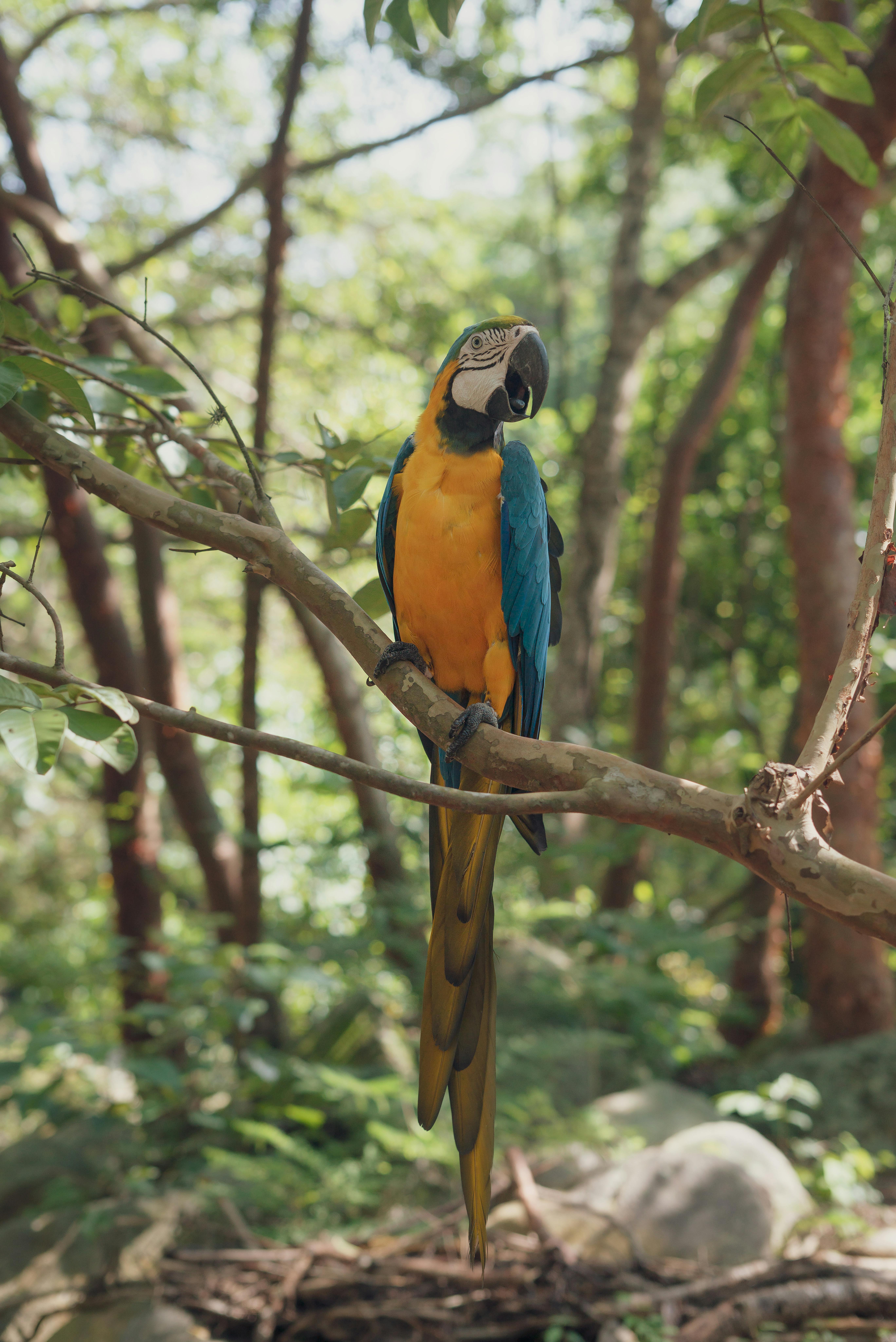Effective Ways to Choose Neon Tetra Tank Mates for 2025

Effective Ways to Choose Neon Tetra Tank Mates for 2025
Choosing the right tank mates for your neon tetras not only enhances the beauty of your aquarium but also ensures the well-being of these vibrant fish. Neon tetras, with their striking colors and peaceful nature, make ideal candidates for community tanks. However, understanding their compatibility with other fish and the overall tank environment is crucial to avoid stress and aggression. In this article, we’ll explore the best tank mates for neon tetras, focusing on peaceful fish species, care practices, and optimal tank setups.
By carefully selecting compatible fish, you can create a harmonious community aquarium that supports the neon tetra's social behavior while providing a beautiful display. We will cover factors to consider when choosing tank mates, how to set up an ideal environment, and give tips for maintaining peace among different species. Let’s dive into the essentials of caring for neon tetras with other fish!
Identifying Suitable Tank Mates for Neon Tetras
Understanding the behavioral traits and needs of neon tetras is the first step in choosing suitable companions. Neon tetras are small, peaceful, and schooling fish, typically requiring companions that share similar temperament. They thrive in environments with stable water parameters and should be kept with species that exhibit non-aggressive behaviors.
Best Tank Mates for Neon Tetras
When selecting tank mates, it's essential to pick species that can coexist peacefully with neon tetras. Some of the best tank mates include:
- Guppies: These colorful companions are small and non-aggressive, making them excellent partners for a neon tetra community.
- Endler's Livebearers: Similar in size and temperament to guppies, Endler's are vibrant additions that thrive in the same water conditions as tetras.
- Corydoras Catfish: As bottom dwellers, corydoras do not compete for space or food with neon tetras, making them perfect tank mates.
- Rasboras: These schooling fish share similar water and social requirements, enhancing the community tank's activity while maintaining harmony.
Peaceful Fish Options for Tetra Community Tanks
When selecting additional fish, it’s crucial to find species that exhibit peaceful behavior and aren’t territorial. Suitable candidates include:
- Cherry Shrimp: They serve both as a colorful addition and a scavenger, cleaning uneaten food without bothering the tetras.
- Snails (like Nerite Snails): Snails pose no threat to tetras and can help with algae control in the tank.
- Dwarf Cichlids: Certain species like the Apistogramma can coexist peacefully if they have enough hiding spaces and are not overly aggressive.
Ensure that any companion fish are similar in size to neon tetras, ideally no larger than the neon's mouth size, and avoid species known for aggression, such as larger cichlids or barbs.
Creating the Ideal Tank Setup for Neon Tetras
Establishing an aquarium that caters to the needs of neon tetras and their tank mates is vital for maintaining a peaceful community. The setup should focus on providing suitable hiding spots, proper lighting, and avoiding overcrowding.
Tank Environment and Landscape
A well-planned tank landscape can significantly enhance the well-being of neon tetras. Include plants and decorations that create a natural habitat:
- Live Plants: Plants like Java Moss and Anubias not only provide hiding spots but also help oxygenate the water.
- Substrate Options: A soft substrate is ideal for bottom dwellers like corydoras, preventing damage to their delicate bodies.
- Aquarium Decorations: Use rocks, caves, and driftwood to create territories and spaces for different fish to explore.
Proper lighting is also essential. Neon tetras prefer dim lighting similar to their natural habitat, which can be achieved through subdued fluorescent lights or LED setups.
Maintaining Optimal Water Conditions
Neon tetras thrive best in stable water conditions, typically at temperatures between 70-81°F (21-27°C). It's critical to monitor the water parameters, including pH levels (around 6.0-7.5) and water hardness (2-15 dGH), for the health of both tetras and their companions:
- Filtration Systems: A good filtration system helps maintain clean water and reduces stress.
- Water Changes: Performing routine water changes of 15-20% weekly helps keep the parameters stable.
- Regular Testing: Regularly test for ammonia, nitrites, and nitrates to catch any potential issues early.
Caring for Neon Tetras with Tank Mates
Caring for neon tetras requires specific attention to their interactions with other species. Observation of behavior is key to ensuring peaceful coexistence.
Feeding Schedule and Compatibility
Feeding neon tetras alongside other fish necessitates careful observation to prevent competition over food. It's recommended to:
- Feed a high-quality tetra food that floats, ensuring all fish can access the food easily.
- Adjust portion sizes based on the number and types of fish to reduce excess food.
- Consider color enhancing foods to bring out their vibrant hues while providing balanced nutrition.
Monitor feeding reactions and ensure no fish show signs of distress; this can be indicative of incompatible tank mates.
Behavior Analysis and Interaction
Understanding the behavior of neon tetras in a community tank setting is essential for ensuring harmony. Observably social, these fish often prefer to school, so:
- Maintain groups of at least six tetras to enhance their confidence and reduce stress.
- Monitor interactions; neon tetras may feel threatened by overly aggressive species or predators.
- Provide ample hiding spaces to allow them an escape route if needed, promoting a sense of security.
Common Mistakes to Avoid with Neon Tetra Tank Mates
While setting up a community tank, avoid these common pitfalls to ensure a thriving environment for your neon tetras:
Overcrowding and Incompatibility Issues
One of the most frequent mistakes is overcrowding the tank, leading to stress and aggression. Stick to the rule of approximately one inch of fish per gallon:
- Aim for a balanced mix of species to prevent dominance.
- Don't add tank mates without considering their temperament and size compared to neon tetras.
- Regularly review interactions and be prepared to separate any incompatible species.
Neglecting Environmental Needs
Ignoring specific water quality needs can lead to disease and fatalities among your community fish. Maintain diligence by:
- Regular testing and water changes.
- Monitoring for signs of stress or illness in both neon tetras and their tank mates.
- Providing enrichment through varied diet and suitable habitat structures.


Q&A: Addressing Common Concerns
Can neon tetras live with shrimp?
Yes, certain shrimp varieties, like cherry or ghost shrimp, can coexist peacefully with neon tetras as they do not pose a threat to them. However, monitor interactions to ensure the shrimp are not seen as food, especially if the tetras are hungry.
What are the ideal water parameters for neon tetras?
Neon tetras thrive in soft, slightly acidic water with pH levels between 6.0 and 7.5. Keeping temperatures between 70-81°F and maintaining a clean tank is vital for their health.
How to introduce new tank mates to neon tetras?
When introducing new fish, acclimatize them slowly to the aquarium's water conditions. It's best to float the new fish in a bag for around 30 minutes before releasing them into the tank.
What's the best tank size for neon tetras?
A minimum tank size of 10 gallons is recommended for neon tetras, especially when housing them in groups of 6 or more with compatible tank mates to provide ample swimming space and a comfortable environment.
How to handle aggression in community tanks?
If aggression arises, first identify the source fish, then consider moving them to a different tank. Provide more hiding places and consider reducing the population to help maintain peace within the community.
In summary, by understanding the specific needs of neon tetras and their compatible tank mates, you can create a stunning and harmonious community aquarium that brings joy and tranquility. Ensuring proper tank setups, water conditions, and observing behaviors will lead to happy tetras and their companions.